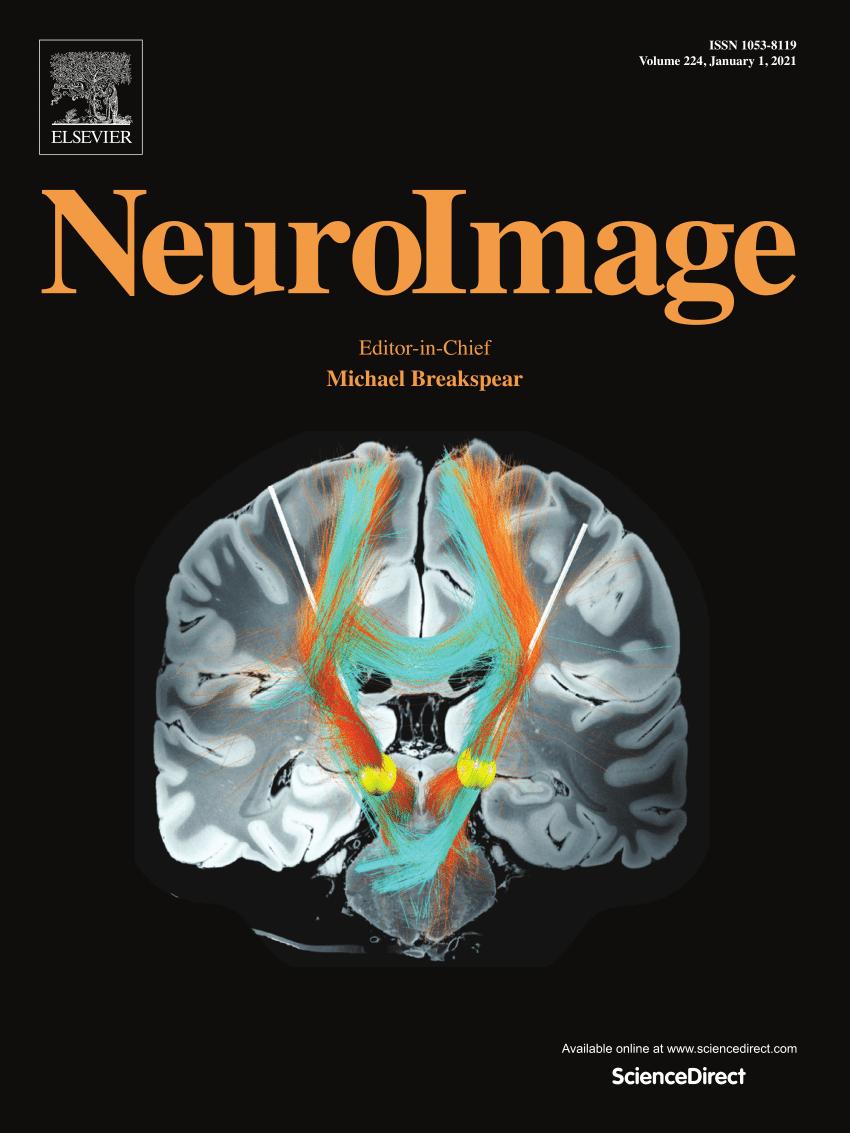经颅光生物调节改善健康老年人的脑功能网络和工作记忆:一项fNIRS研究。
IF 4.5
2区 医学
Q1 NEUROIMAGING
引用次数: 0
摘要
背景:经颅光生物调节(tPBM)作为一种新型的无创神经刺激技术,在改善老年人认知功能方面显示出令人瞩目的潜力。然而,潜在的机制尚不清楚。神经影像学研究发现,tpbm诱导的生理变化在靶区和非靶区均存在,提示有必要从全脑水平认识其调节机制。目的:本随机、单盲、假对照交叉研究旨在探讨tPBM通过优化静息状态脑功能网络特性来改善健康老年人工作记忆的假说。方法:55名健康的右撇子老年人随机分为假手术组和手术组。经过一段洗脱期后,他们被分配到相反的干预环节。每个疗程包括以下内容:主动或假tPBM应用,用1064纳米激光照射左前额;静息态功能近红外光谱(fNIRS)测量前后;还有数字n-back任务。研究了n-back任务的准确性和反应时间的差异,以及脑网络功能连通性和图形指标的变化,并比较了活动和假tPBM会话之间的差异。此外,还研究了tpbm诱导的脑功能网络变化与n-back任务之间的相关性。结果:实验结果表明,与假tPBM组相比,活动tPBM组的3-back任务的正确率和反应时间均有显著提高。此外,tPBM活动阶段的整体效率、局部效率、节点效率和功能连通性显著提高,尤其是在额顶叶区。重要的是,3-back准确性的改变与功能连通性和节点效率的变化呈正相关,主要是在活跃的tPBM会话中,3-back准确性增加的受试者的左前额皮质。结论:tPBM可能通过调节静息状态脑功能网络特性,作为改善老年人工作记忆的有效工具。需要大规模样本的调查来进一步验证本研究的结果。本文章由计算机程序翻译,如有差异,请以英文原文为准。
Transcranial photobiomodulation improves functional brain networks and working memory in healthy older adults: An fNIRS study
Background
Transcranial photobiomodulation (tPBM), as a novel non-invasive neurostimulation technique, has shown the compelling potential for improving cognitive function in aging population. However, the potential mechanism remains unclear. Neuroimaging studies have found that tPBM-induced physiological changes exist in both targeted and non-targeted brain areas, suggesting the necessity of understanding the modulation mechanism from the perspective of the whole brain level.
Objective
This randomized, single-blind, sham-controlled crossover study aimed to investigate the hypothesis that tPBM improved working memory in healthy older adults through the mechanism of optimizing the properties of the resting-state functional brain networks.
Methods
A total of 55 right-handed healthy older adults were randomly assigned to sham tPBM session group or active tPBM session group. After a washout interval, they were assigned to the opposite intervention session. Each session included the following: active or sham tPBM application with a 1064-nm laser to the left forehead; before and after, resting-state functional near-infrared spectroscopy (fNIRS) measurements; and the digital n-back task. Differences in accuracy and reaction time of the n-back task, and changes in functional connectivity and graph metrics of the brain networks were investigated and compared between the active and sham tPBM sessions. In addition, correlations between tPBM-induced changes in functional brain networks, and the n-back task were examined.
Results
The results showed that compared with the sham tPBM session, the accuracy and reaction time during 3-back task significantly improved in the active tPBM session. In addition, the global efficiency, local efficiency, nodal efficiency, and functional connectivity significantly increased in the active tPBM session, particularly in the frontoparietal areas. Importantly, the altered 3-back accuracy was positively correlated with the changes of functional connectivity and nodal efficiency mainly in left prefrontal cortex in those who had increased 3-back accuracy in the active tPBM session.
Conclusion
This study suggests that tPBM may serve as an effective tool to improve working memory in older adults through the modulation of resting-state functional brain network properties. Investigations in large-scale samples are needed to further validate the findings of this study.
求助全文
通过发布文献求助,成功后即可免费获取论文全文。
去求助
来源期刊

NeuroImage
医学-核医学
CiteScore
11.30
自引率
10.50%
发文量
809
审稿时长
63 days
期刊介绍:
NeuroImage, a Journal of Brain Function provides a vehicle for communicating important advances in acquiring, analyzing, and modelling neuroimaging data and in applying these techniques to the study of structure-function and brain-behavior relationships. Though the emphasis is on the macroscopic level of human brain organization, meso-and microscopic neuroimaging across all species will be considered if informative for understanding the aforementioned relationships.
 求助内容:
求助内容: 应助结果提醒方式:
应助结果提醒方式:


